Introduction
Effective communication is the backbone of quality healthcare. Patient education not only empowers individuals to make informed decisions about their health but also promotes better healthcare outcomes. In India, where healthcare access and literacy vary widely, the use of healthcare signage can serve as a powerful tool to bridge knowledge gaps and empower patients with essential information. This article delves into the significance of patient education through healthcare signage in India, exploring its potential to revolutionise healthcare awareness.
The Power of Patient Education
Patient education is a linchpin in the realm of healthcare. It empowers individuals, enhances patient satisfaction, and ultimately leads to improved health outcomes. In the multifaceted landscape of India, where cultural, linguistic, and socioeconomic factors often influence health beliefs and practises, effective patient education becomes indispensable for providing comprehensive healthcare.
Harnessing Healthcare Signage
Healthcare signage encompasses a gamut of visual communication tools found within healthcare facilities, including posters, pamphlets, digital displays, and wayfinding signs. These tools possess the potential to reach a vast and diverse audience, making them indispensable within India's complex healthcare ecosystem. Here are some ways healthcare signage can catalyse health awareness in India:
- Multilingual Communication: India is a tapestry of languages, with over 1,600 linguistic variations. Multilingual healthcare signage ensures essential health information is accessible to people from diverse language backgrounds, fostering inclusivity and understanding.
- Proactive Health Messages: Healthcare signage can convey crucial preventive measures, such as vaccination schedules, hygiene practises, and lifestyle choices, which can substantially reduce the burden of preventable diseases in India.
- Elevating Health Literacy: India grapples with a considerable health literacy gap, leading to misconceptions and misunderstandings about healthcare. Signage can demystify medical jargon, procedures, and conditions through plain language, rendering treatment plans more comprehensible.
- Wayfinding and accessibility: Navigating healthcare facilities can be an intimidating experience, especially for first-time visitors. Clear signage simplifies the process, guiding patients and visitors to their destinations, alleviating stress, and enhancing the overall healthcare experience.
- Public Health Campaigns: Healthcare signage can be harnessed to disseminate vital public health messages, such as the benefits of breastfeeding, the significance of routine check-ups, and the hazards of tobacco and alcohol consumption.
Challenges and Innovative Solutions
Introducing effective healthcare signage in India does come with its own set of challenges, including illiteracy, varying technological access, and a lack of standardisation across healthcare facilities. However, these challenges can be surmounted through innovative approaches:
- Visual Signage: Incorporating visual elements and universally recognised symbols can transcend language and literacy barriers, making healthcare information more accessible.
- Mobile Technology Integration: In today's digital era, smartphones have become ubiquitous. Healthcare facilities can explore the utilisation of mobile apps and QR codes, granting patients access to comprehensive health information and resources.
- Collaborative Synergy: Collaboration among healthcare professionals, graphic designers, and communication experts can yield culturally and regionally sensitive healthcare signage that is both informative and impactful.


